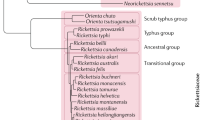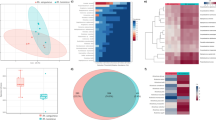Abstract
INTRACELLULAR Rickettsia-like micro-organisms are known to exist naturally in ticks, usually occurring in the Malpighian tubules and oocytes1,2. Their distribution in the organs of the ticks has been, in the past, studied by various investigators3,4 from conventionally stained smears and sections of tick tissues.
This is a preview of subscription content, access via your institution
Access options
Subscribe to this journal
Receive 51 print issues and online access
$199.00 per year
only $3.90 per issue
Buy this article
- Purchase on SpringerLink
- Instant access to full article PDF
Prices may be subject to local taxes which are calculated during checkout
Similar content being viewed by others
References
Steinhaus, E. A., Insect Microbiology (Comstock, Ithaca, N.Y., 1946).
Buchner, P., Endosymbiose der Tiere mit pflanzlichen Mikro-organismen (Birkhauser, Basel, Switzerland, 1953).
Cowdry, E. V., J. Exp. Med., 41, 817 (1925).
Mudrow, E., Z. Parasitenk., 5, 138 (1932).
Roshdy, M. A., J. Insect Path., 3, (2), 148 (1961).
Roshdy, M. A., Nature, 192, 186 (1961).
Newcomer, E. H., Stain Tech., 34 (6), 349 (1959).
Newcomer, E. H., Science, 118, 161 (1953).
Author information
Authors and Affiliations
Rights and permissions
About this article
Cite this article
ROSHDY, M. Feulgen–Schiff's Technique for Examination of the Distribution of the Intracellular Rickettsia-like Micro-organisms in Whole Mounts of Ticks, or their Tissues. Nature 199, 827 (1963). https://doi.org/10.1038/199827a0
Issue date:
DOI: https://doi.org/10.1038/199827a0



